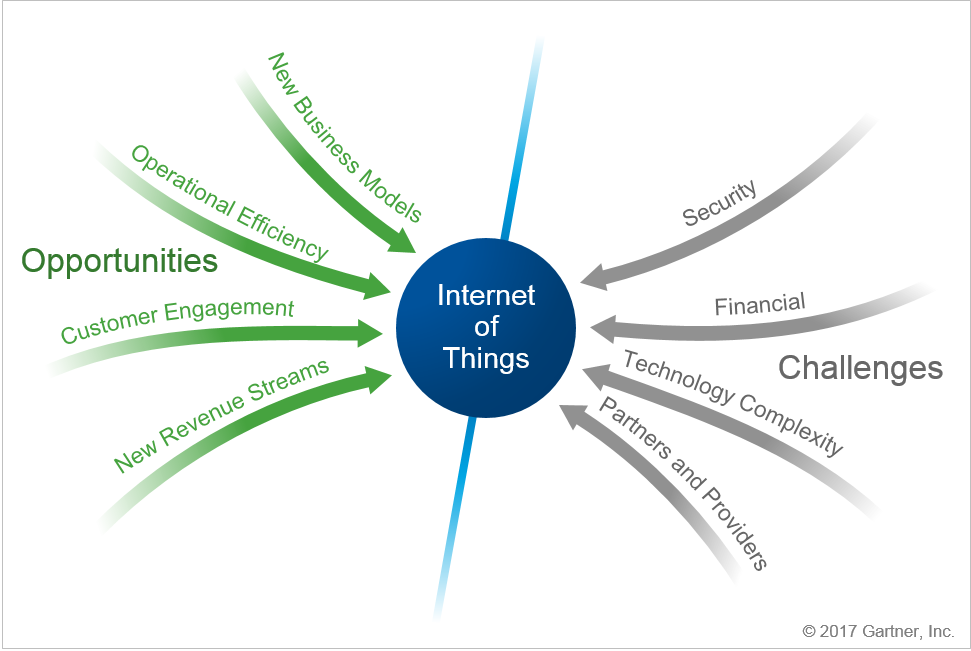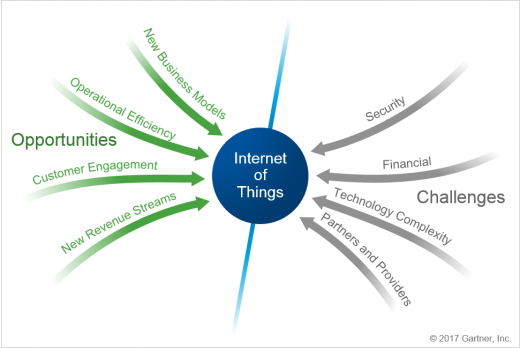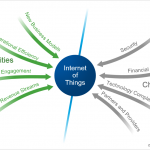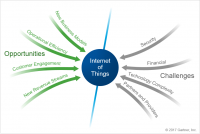Marketers Smell A New Opportunity In IoT
Marketers Smell A New Opportunity In IoT
by Patrick Kirby , Op-Ed Contributor, November 10, 2017
A few years ago, Dunkin’ Donuts launched a new kind of advertising in South Korea. The marketer pitched its coffee to bus riders in Seoul by pumping the scent of fresh coffee when the chain’s jingle played. The experiment prompted a 16% boost in visits to Dunkin’ Donuts stores near bus stops and a 29% jump in coffee sales.
When you think about it, this type of olfactory marketing isn’t new. If you’ve ever walked by a Cinnabon bakery, you are deeply familiar with that company’s smell. Many hotel chains now have signature scents, too.

For most marketers, vision and sound have been the main focus of their marketing. But IoT and VR mean revisiting that old playbook and considering a consistent identity that addresses four of our five senses (we can leave taste to the food companies for now). Here’s why:
Voice control makes audio more prominent. A few years ago, the voice-based search offered by Siri and a few others wasn’t very accurate. In more recent years, however, voice recognition has greatly improved. Last year, Google reported that some 20% of its searches were voice-based. Another study shows that 41% of U.S. adults and more than half of U.S. teens use voice search on a daily basis. Amazon’s Alexa is now in over 10 million U.S. homes. Some brands — like Intel and BMW — have long had signature sounds. However, in a world in which we’re all talking more to our devices, brands may have to find their voice.
Haptic technology means that touch is a touchpoint. Does your brand have a signature feel? It could. Arby’s, Stolichnaya Vodka, BMW, Royal Caribbean and Truvia, among others, have experimented with adding touch sensations to their ads. Such touches can come through mobile or IoT devices or even from your clothing: Google’s Project Jacquard has worked with Levi’s on a jacket that can alert you to incoming calls and texts and transmit haptic sensations.
Some smell an opportunity for olfactory branding. Dunkin’ Donuts and Cinnabon aren’t the only companies using scent for marketing. Verizon, Abercrombie & Fitch and Bed Bath & Beyond, among others, work with Prolitec to offer scented experiences for customers. For retailers, odor provides another trigger to engage in-store customers. As Hardware Retailing magazine recently noted, using a citrus scent in a display for cleaning products can underscore the items’ effectiveness and provide some added “pop.”
Consumers will see things differently too. Let’s not forget the effect that IoT will have on consumers’ vision. When smart glasses become a viable option (which will happen when they look more like real glasses and less like the device that LeVar Burton’s character wore on Star Trek: The Next Generation), then marketers will have new opportunities to present their brands and offerings in AR. Walk into a store with smart glasses and that Tide endcap will include the ability to see a short video explaining why the new formulation is so much better. Packaging will become more of a platform for AR experiences than an end in itself.
The upshot for marketers is that the standard means of engaging users’ senses are about to change. People will expect inanimate objects to talk back to them and transmit images and video that will help close the sale. Brand identity in this world will require signature smells, sounds and feelings in addition to signature imagery.
It’s not yet necessary for every marketer to address all of these touchpoints, but the need for such a strategy is starting to make a lot of sense.
A few years ago, Dunkin’ Donuts launched a new kind of advertising in South Korea. The marketer pitched its coffee to bus riders in Seoul by pumping the scent of fresh coffee when the chain’s jingle played. The experiment prompted a 16% boost in visits to Dunkin’ Donuts stores near bus stops and a 29% jump in coffee sales.
When you think about it, this type of olfactory marketing isn’t new. If you’ve ever walked by a Cinnabon bakery, you are deeply familiar with that company’s smell. Many hotel chains now have signature scents, too.
For most marketers, vision and sound have been the main focus of their marketing. But IoT and VR mean revisiting that old playbook and considering a consistent identity that addresses four of our five senses (we can leave taste to the food companies for now). Here’s why:
Voice control makes audio more prominent. A few years ago, the voice-based search offered by Siri and a few others wasn’t very accurate. In more recent years, however, voice recognition has greatly improved. Last year, Google reported that some 20% of its searches were voice-based. Another study shows that 41% of U.S. adults and more than half of U.S. teens use voice search on a daily basis. Amazon’s Alexa is now in over 10 million U.S. homes. Some brands — like Intel and BMW — have long had signature sounds. However, in a world in which we’re all talking more to our devices, brands may have to find their voice.
Haptic technology means that touch is a touchpoint. Does your brand have a signature feel? It could. Arby’s, Stolichnaya Vodka, BMW, Royal Caribbean and Truvia, among others, have experimented with adding touch sensations to their ads. Such touches can come through mobile or IoT devices or even from your clothing: Google’s Project Jacquard has worked with Levi’s on a jacket that can alert you to incoming calls and texts and transmit haptic sensations.
Some smell an opportunity for olfactory branding. Dunkin’ Donuts and Cinnabon aren’t the only companies using scent for marketing. Verizon, Abercrombie & Fitch and Bed Bath & Beyond, among others, work with Prolitec to offer scented experiences for customers. For retailers, odor provides another trigger to engage in-store customers. As Hardware Retailing magazine recently noted, using a citrus scent in a display for cleaning products can underscore the items’ effectiveness and provide some added “pop.”
Consumers will see things differently too. Let’s not forget the effect that IoT will have on consumers’ vision. When smart glasses become a viable option (which will happen when they look more like real glasses and less like the device that LeVar Burton’s character wore on Star Trek: The Next Generation), then marketers will have new opportunities to present their brands and offerings in AR. Walk into a store with smart glasses and that Tide endcap will include the ability to see a short video explaining why the new formulation is so much better. Packaging will become more of a platform for AR experiences than an end in itself.
The upshot for marketers is that the standard means of engaging users’ senses are about to change. People will expect inanimate objects to talk back to them and transmit images and video that will help close the sale. Brand identity in this world will require signature smells, sounds and feelings in addition to signature imagery.
It’s not yet necessary for every marketer to address all of these touchpoints, but the need for such a strategy is starting to make a lot of sense.
MediaPost.com: Search Marketing Daily
(33)







